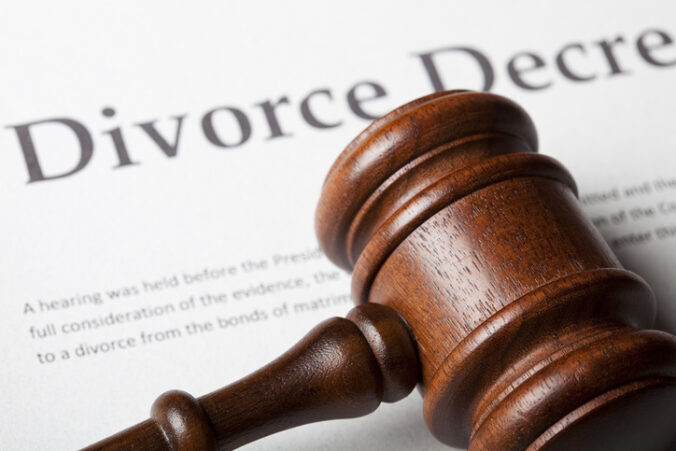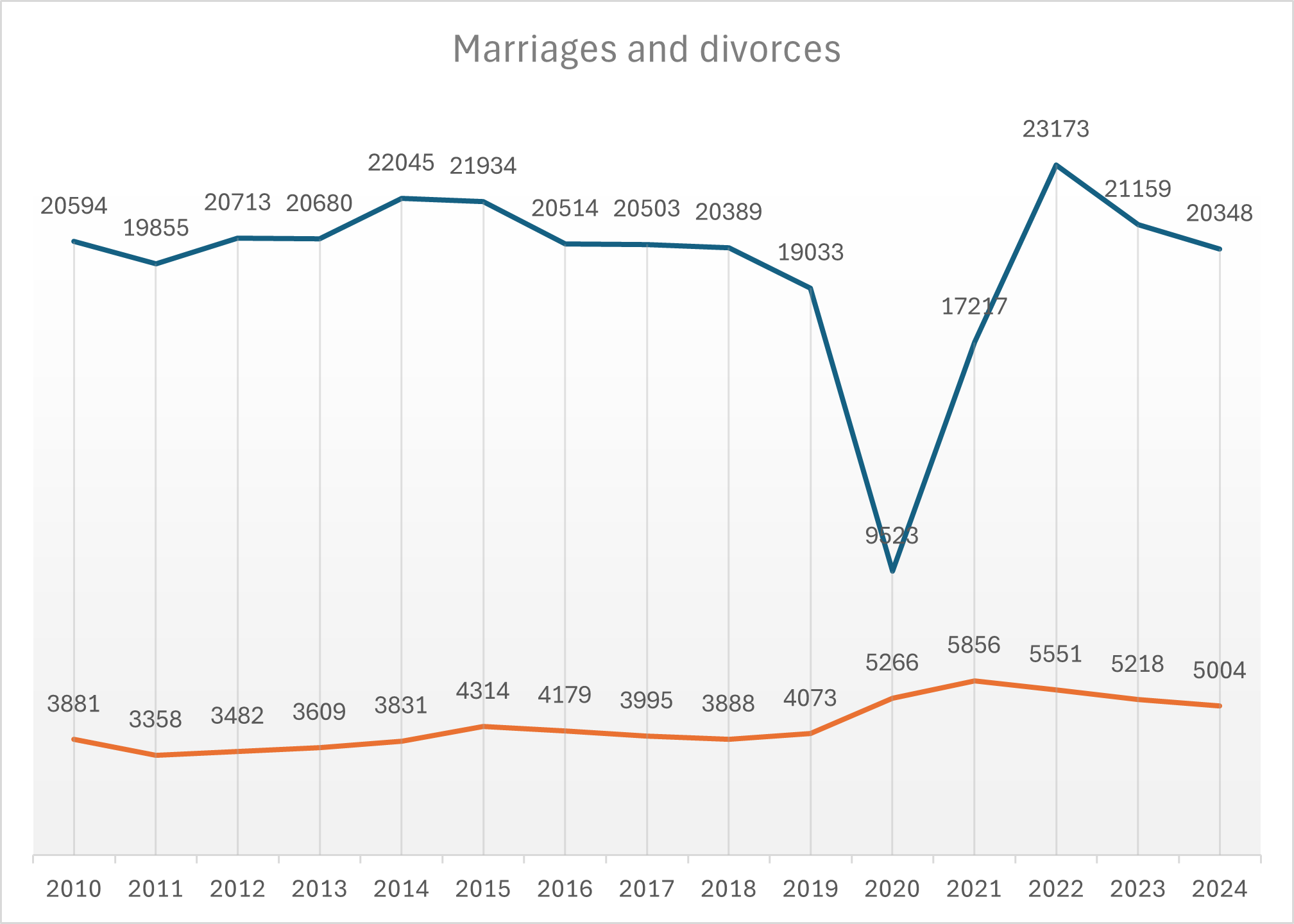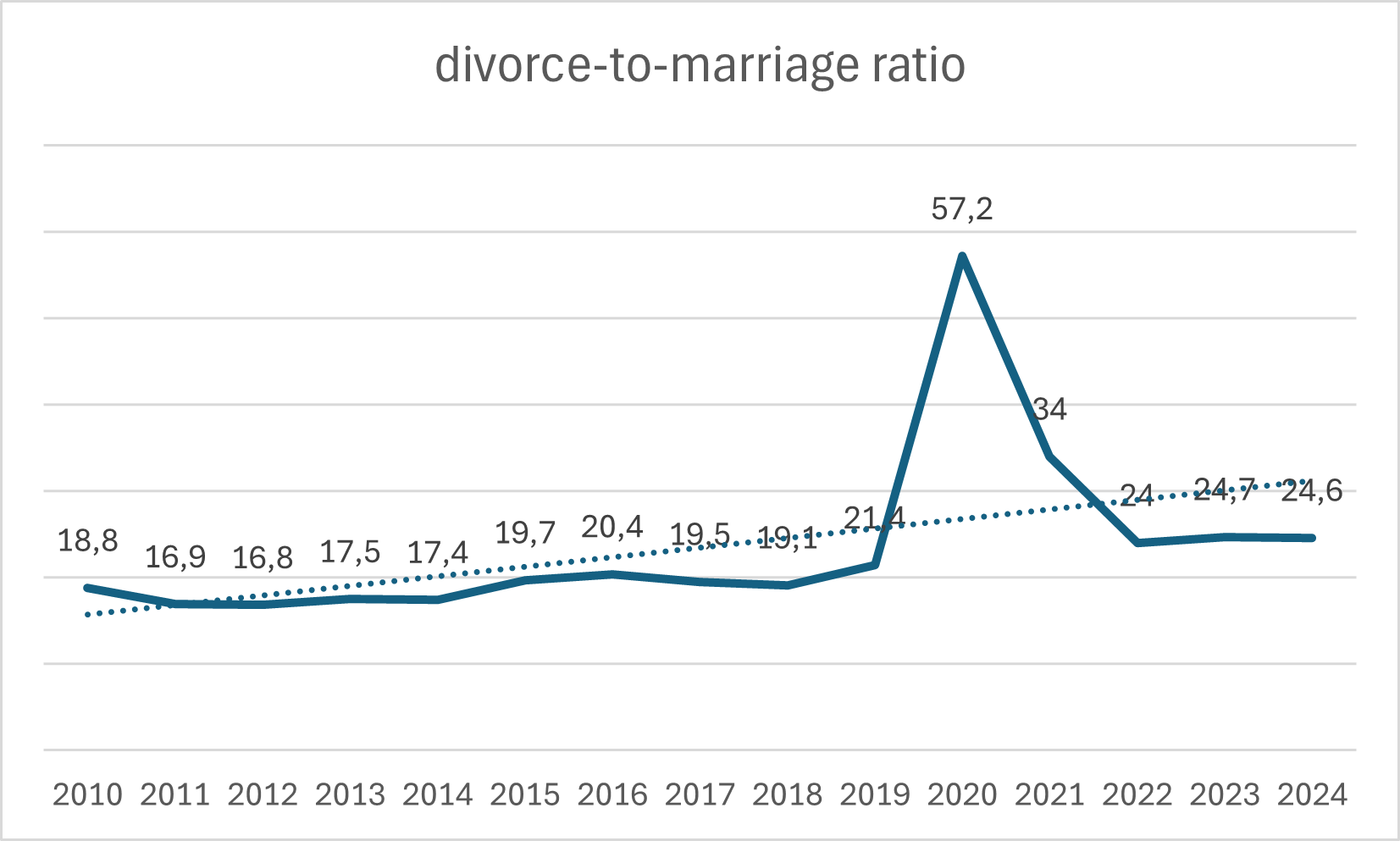New figures show that the number of people applying to divorce has fallen somewhat, seeming to reverse a previous upward trend, but look closer and you will see that divorce is becoming more common in Ireland, relatively speaking, that is, when compared with the numbers marrying each year, which is in steep decline.
In fact, relative to the number of couples getting married each year, the percentage of couples filing for divorce has gone up by nearly 30pc since 2010, a short time period.
The newly published Courts Service Annual Report shows that last year there were 5,004 applications for divorce, down on the previous two years. But those two years are not representative of present trends, for two main reasons.
One is that the Family Law Act 2019 halved the required separation period before filing for divorce from four years to two, meaning there was a rush of applications. This legislative change was introduced following a referendum.
The COVID-19 pandemic also played a role, disrupting both marriage and divorce patterns: marriages were postponed or cancelled, while household tensions during lockdowns may have led to a spike in divorce applications, post-lockdowns.
But if we look at the past 15 years, when the population grew approximately 20pc, the trend is quite clear: marriage rates have declined, while divorce applications have remained consistently high, if not rising overall. This is a pattern that predates the pandemic. In 2010, there were 20,594 marriages in a population of approximately 4,470,700. By 2024, that number had dropped to 19,680 (opposite-sex only) or 20,348 including same-sex couples, in an estimated population of 5,380,300. In contrast, divorce applications have increased by about 29pc, moving in the opposite direction.
There are many ways to measure divorce rates. For instance, we often hear that the divorce rate in Ireland is quite low and stable, compared to other countries. The crude divorce rate, a commonly cited figure, is expressed as a percentage of every 1,000 people and it is about 0.7 in Ireland. In other words, last year there were 7 divorces every 10,000 people.
But the crude divorce rate can be misleading, especially in societies where fewer people are marrying. It includes the entire population, married or not, making it a blunt tool for understanding real marital dynamics.
A more revealing statistic is the divorce-to-marriage ratio, which more accurately reflects the dramatic changes of the past 15 years in Ireland.
In 2010, there were 3,881 divorce applications and 20,594 marriages, giving a ratio of 18.8pc. By 2024, that ratio had increased to 24.6pc, with 5,004 divorce applications and 20,348 marriages recorded. In other words, in 2010 there was roughly one divorce application for every five new marriages; today, it is one for every four.
Interpreting this ratio also requires caution. The figure does not measure how many marriages eventually end in divorce; rather, it compares two parallel social trends: fewer newlyweds and more marital breakdowns, relatively speaking. (The blip in 2020 is due to Covid and few people marrying that year which artificially increased the divorce to marriage ratio).
Those two trends going in opposite directions is an unequivocal indication of malaise that the Irish couples are suffering.
The long-term negative effects of those trends not only the individuals involved but on society in general, deserve serious attention, public discussion, and thoughtful policy response.


















